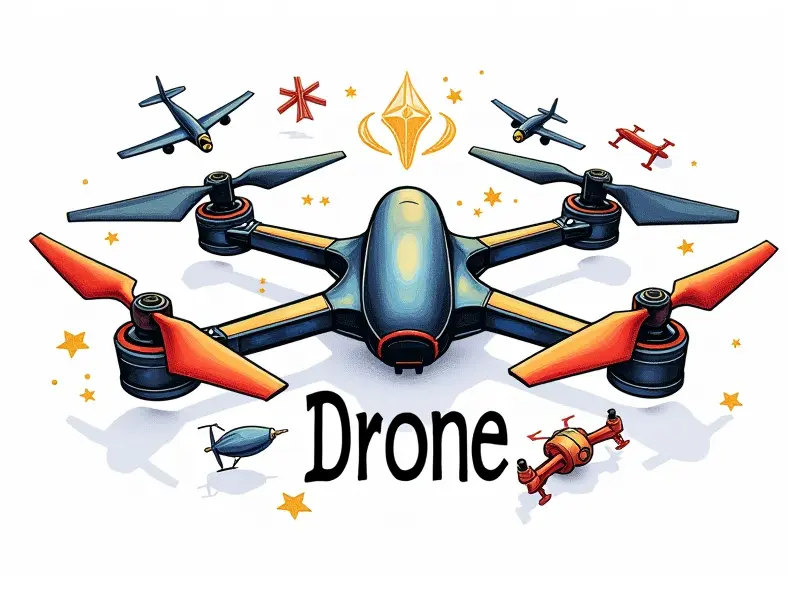How do I set up FPV telemetry?

Beginner's Guide to FPV Drone Telemetry
Welcome to the world of FPV (First Person View) drone telemetry! As a beginner, you might be wondering how to set up this essential feature that enhances your flying experience. This guide will walk you through the process step-by-step and provide tips for optimizing your setup.
Setting Up FPV Telemetry: A Beginner's Guide
FPV telemetry allows you to monitor critical data such as battery voltage, GPS position, altitude, speed, and more in real-time. This information is invaluable for ensuring the safety of your drone and enhancing your flying performance.
Simplified FPV Telemetry Installation Process
- Choose a telemetry module: Select a reliable telemetry module compatible with your flight controller.
- Connect the telemetry module: Follow the manufacturer's instructions to connect the telemetry module to your drone’s flight controller and power source.
- Install ground station software: Download and install a telemetry ground station application on your mobile device or computer.
Step-by-Step FPV Telemetry Setup
The following steps will help you set up FPV telemetry effectively:
- Select the right hardware: Choose a telemetry module that supports all necessary features and is compatible with your flight controller.
- Configure the telemetry module: Set up the telemetry module according to the manufacturer's instructions, ensuring it communicates correctly with your flight controller.
- Install ground station software: Download a reliable ground station application like Mission Planner or Cleanflight Configurator and install it on your device.
- Pair the telemetry module: Connect to the telemetry module via Bluetooth or another supported protocol from your ground station app.
- Test the connection: Ensure that data is being transmitted correctly by checking the telemetry feed in your ground station software.
Quick Tips for Setting Up FPV Telemetry
- Check compatibility: Verify that your telemetry module and flight controller are compatible before installation.
- Use quality cables: Ensure you use high-quality, reliable cables to connect the telemetry module to your drone’s power source and flight controller.
- Test in a safe environment: Before flying outdoors, test your setup indoors or in an open area without obstacles.
Fast Track Your FPV Telemetry Setup
To expedite the process of setting up FPV telemetry, follow these quick steps:
- Select a pre-configured module: Choose a telemetry module that comes with pre-installed firmware and configuration settings.
- Use automatic pairing: Opt for ground station software that supports automatic pairing of the telemetry module.
- Follow manufacturer tutorials: Watch video guides or read detailed instructions provided by the telemetry module’s manufacturer.
Optimize Your FPV with Telemetry Setup
Once your FPV telemetry is set up, you can further optimize it to enhance performance and reliability:
- Monitor battery voltage: Keep an eye on the battery level to avoid unexpected power failures.
- Track GPS position: Use real-time GPS data to navigate accurately and efficiently during flights.
- Analyze flight data: Review telemetry logs after each flight to identify areas for improvement in your flying technique or equipment performance.
Essential Tips for Setting Up FPV Telemetry
- Backup configuration files: Regularly back up your telemetry module’s configuration settings to avoid losing important data.
- Update firmware regularly: Keep the firmware of your telemetry module and ground station software updated for optimal performance.
- Test in different environments: Test your setup under various conditions (indoors, outdoors, with obstacles) to ensure reliability.
Simplified FPV Telemetry Installation
To simplify the installation process of FPV telemetry, follow these streamlined steps:
- Select a user-friendly module: Choose a telemetry module that comes with easy-to-follow setup instructions and intuitive configuration options.
- Use plug-and-play cables: Opt for high-quality cables designed specifically for your telemetry module to ensure reliable connections.
- Automate the pairing process: Utilize ground station software that supports automatic pairing of the telemetry module, reducing setup time and complexity.
Mastering FPV Telemetry Configuration
To master the configuration of your FPV telemetry system, consider these advanced tips:
- Customize data transmission rates: Adjust the data transmission rate to balance between real-time performance and battery consumption.
- Configure alert notifications: Set up alerts for critical parameters like low battery voltage or GPS signal loss to enhance safety.
- Integrate with other systems: Integrate your telemetry system with autopilot software or flight planning tools for enhanced functionality and control.
The Ultimate FPV Telemetry Setup Checklist
Ensure a successful setup by following this comprehensive checklist:
- Select compatible hardware: Choose a telemetry module that is compatible with your drone’s flight controller and power source.
- Install ground station software: Download and install the appropriate ground station application on your device.
- Connect and configure: Connect the telemetry module to your drone and follow manufacturer instructions for configuration.
- Test data transmission: Verify that data is being transmitted correctly by checking the telemetry feed in your ground station app.
- Optimize performance: Fine-tune settings such as data transmission rates, alert notifications, and integration with other systems for optimal functionality.
Conclusion
Setting up FPV telemetry is a crucial step in enhancing your drone flying experience. By following the steps outlined in this guide and utilizing the tips provided, you can ensure that your telemetry system is reliable, efficient, and optimized for performance. Whether you are a beginner or an experienced pilot, mastering FPV telemetry will significantly improve your ability to fly safely and effectively.

